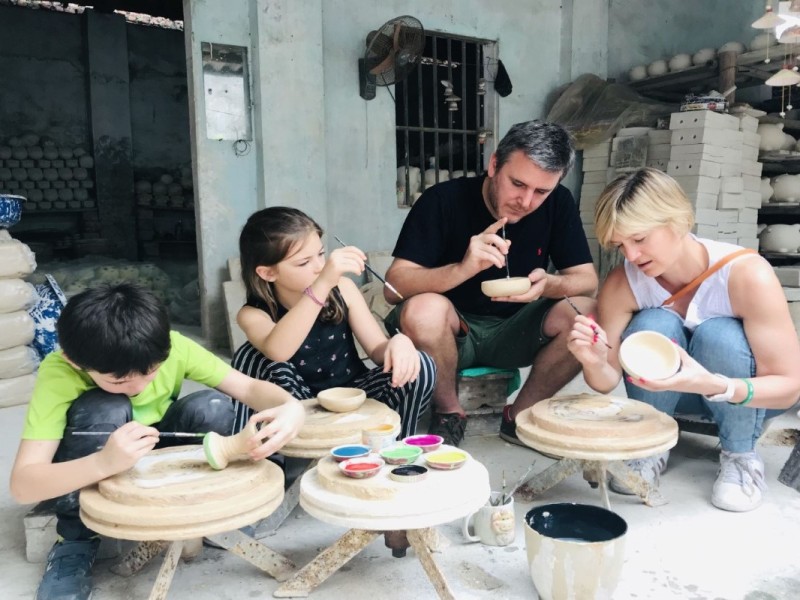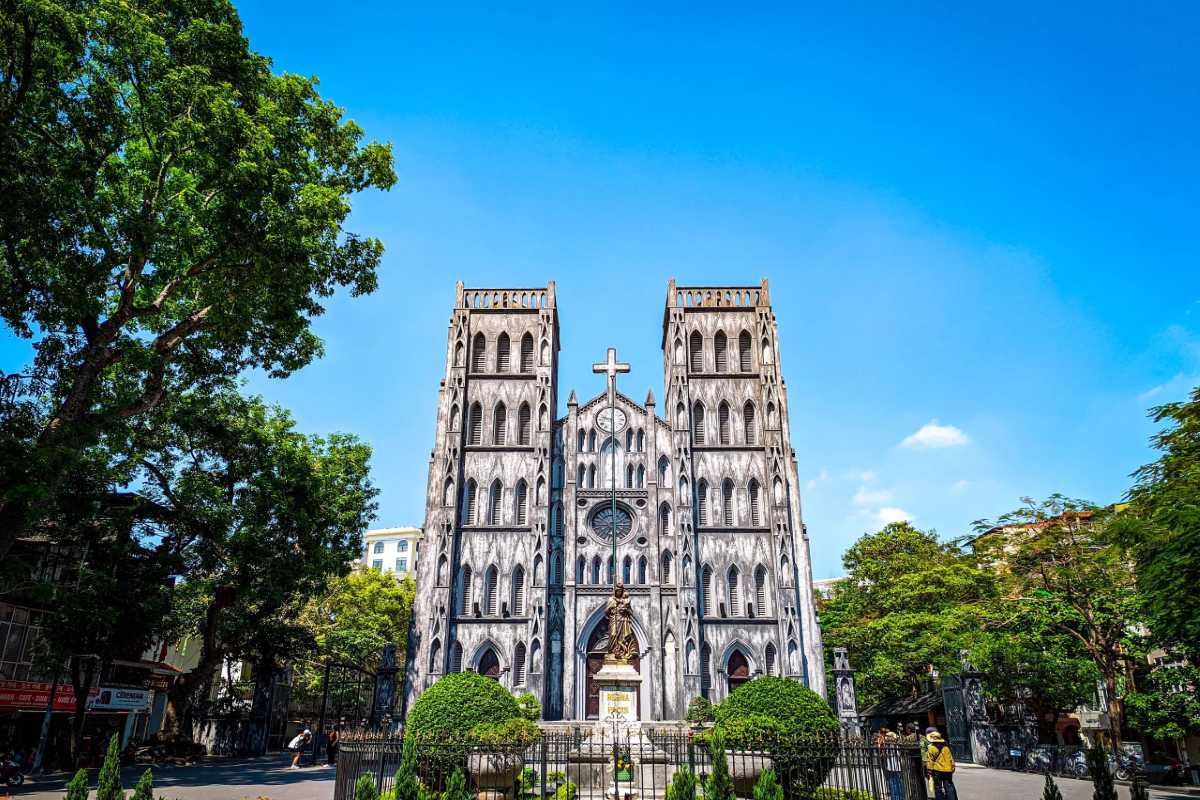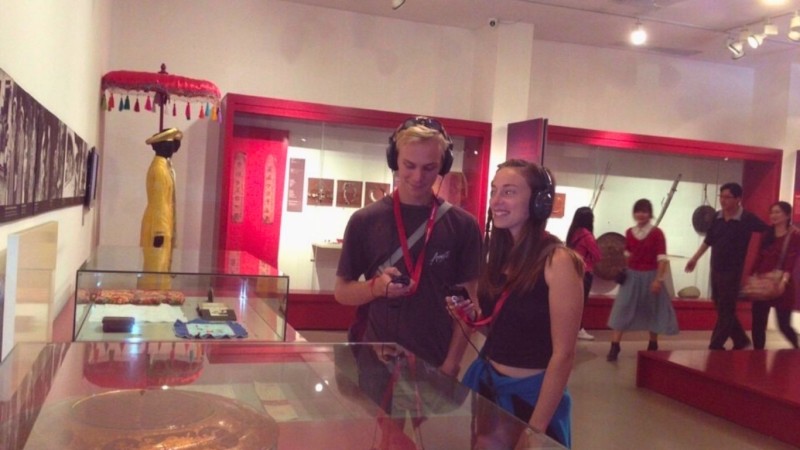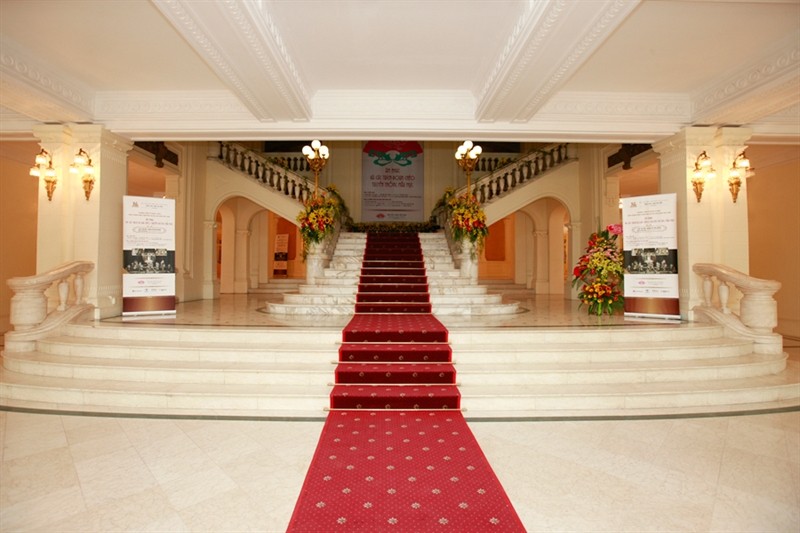Bat Trang Ceramic Village: Complete Travel Guide & Visitor Experience
Bat Trang Ceramic Village is a historic craft village near Hanoi known for its traditional pottery and ceramics. Visitors can experience hands-on pottery workshops, explore artisan studios, and enjoy cultural events that showcase authentic Vietnamese craftsmanship. The village combines rich heritage with modern designs in its products.
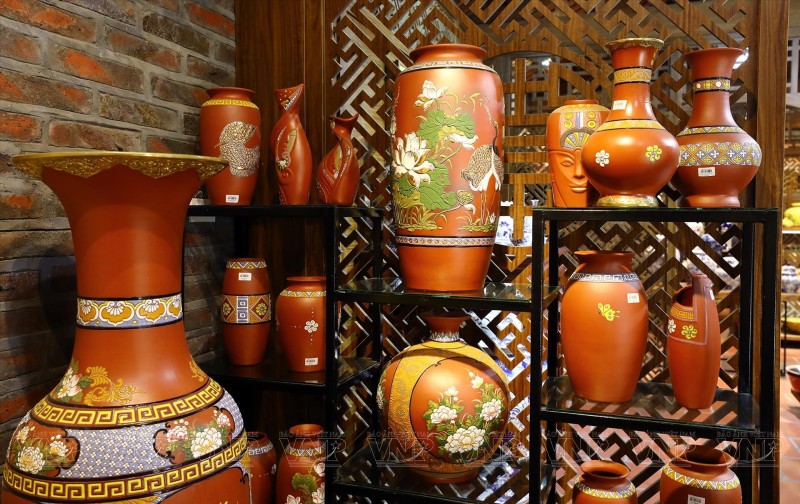
Introduction to Bat Trang Ceramic Village
Bat Trang Ceramic Village is a historic craft village located near Hanoi along the scenic Red River. Renowned for its centuries-old tradition, this village stands as a vibrant symbol of Vietnamese ceramics tradition. Framed by the natural rhythm of the river and shaped by generations of skilled artisans, Bat Trang offers travelers a unique glimpse into authentic craftsmanship where artisan pottery is still created using time-honored techniques. The village’s rich cultural heritage draws visitors eager to experience its blend of traditional charm and evolving creativity.
Discover how the historic legacy and the artisanal spirit of Bat Trang Ceramic Village make it a compelling destination for culturally curious travelers. Plan your visit to immerse yourself in the heart of Vietnam’s ceramic artistry.
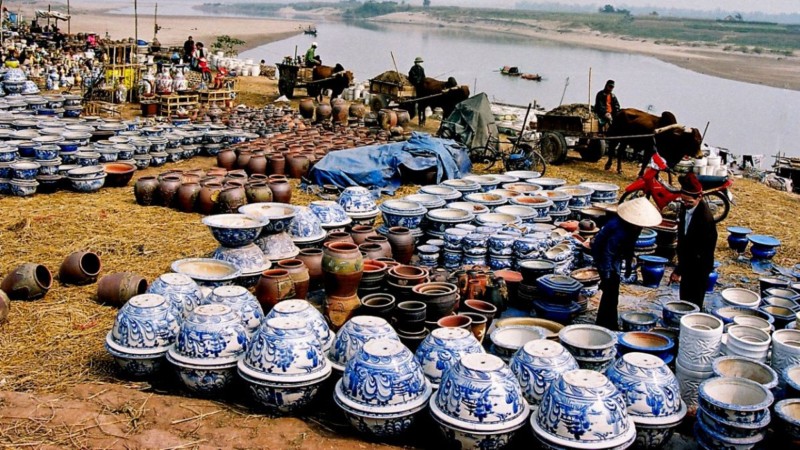
Overview of the Village
Nestled in northern Vietnam, Bat Trang Village has been a center of pottery making for over 700 years. Known for its skilled artisans and rich ceramic heritage, the village has long been a cornerstone of Vietnamese ceramics tradition. The community here thrives on a deep respect for traditional craftsmanship, where pottery making remains a vital cultural practice.
- Founded over seven centuries ago, Bat Trang has passed its craft through generations.
- The village maintains a tight-knit artisan community dedicated to preserving its heritage.
- Its influence on Vietnamese ceramic art is renowned both locally and internationally.
Explore the heart of Bat Trang Village to witness how centuries of history continue to shape the craft and culture.
Historical Origins Dating Back Over 700 Years
The origins of Bat Trang Ceramic Village date back to the Tran Dynasty, establishing a rich tradition that flourished through the Nguyen Dynasty.
- Established during the Tran Dynasty, the village gained prominence for its quality ceramics.
- The Nguyen Dynasty further boosted its craft through royal patronage.
- Bat Trang’s history reflects a continuous evolution within Vietnamese ceramic art.
This deep historical background highlights why Bat Trang Ceramic Village remains a treasured cultural site.
Significance of Bat Trang in Vietnamese Ceramics Tradition
Bat Trang holds a special place in Vietnam’s ceramic legacy, blending age-old methods with evolving artistry.
- The village is known for its distinctive clay and firing techniques unique to the region.
- It serves as a living museum showcasing traditional ceramics Vietnam style.
- Its artisans preserve cultural identity through their craft, passing it down faithfully.
Understanding Bat Trang’s importance enriches any visit to this timeless craft village.
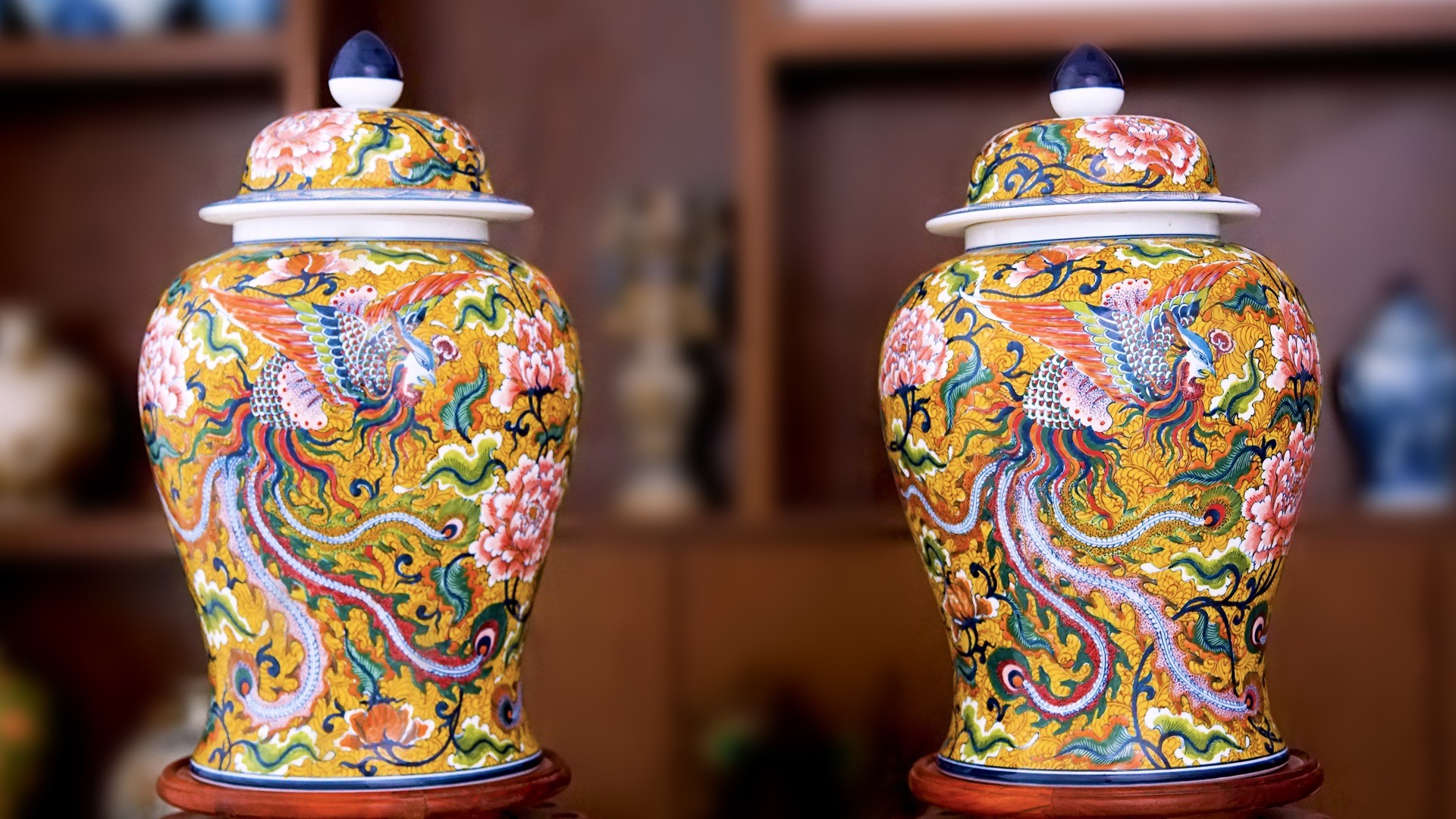
Location and Geographic Context
Bat Trang Ceramic Village is located in the Gia Lam District of Hanoi, just a short distance from the city center. Nestled along the banks of the Red River, the village offers both easy accessibility and a scenic rural atmosphere. Understanding the Bat Trang location and accessibility helps travelers plan their visit effectively.
You can reach Bat Trang Ceramic Village by various transport routes, including public buses, taxis, and motorbikes, making it convenient for day trips from Hanoi.
Plan your journey ahead to experience the vibrant culture and craftsmanship of Bat Trang Ceramic Village with ease.
Proximity to Hanoi and Accessibility
Traveling from Hanoi to Bat Trang Ceramic Village is straightforward with several options:
- Public Bus: Bus routes from central Hanoi run regularly to Bat Trang, offering an affordable travel choice.
- Taxi Services: Convenient for direct travel, taxis provide flexibility and ease for groups or those with limited time.
- Motorbike Routes: For adventurous travelers, motorbike rentals offer an engaging way to explore the route and nearby areas.
These transport methods ensure you can comfortably reach Bat Trang Ceramic Village and enjoy your visit without hassle.
Natural and Cultural Setting Along the Red River
Framed by the tranquil flow of the Red River, Bat Trang Ceramic Village boasts a rich cultural landscape steeped in rural Vietnam traditions.
The village’s location creates a harmonious blend of natural beauty and artisan community life, where sunlight and river breezes shape daily rhythms.
Visiting here lets you witness a traditional village setting, offering an authentic experience grounded in local heritage.

Unique Features of Bat Trang Ceramics
Bat Trang ceramics stand out for their rich blend of traditional craftsmanship and innovative design. These handcrafted pieces are created using time-honored techniques passed down through generations, making each product unique. Understanding Bat Trang pottery techniques reveals the skill and dedication involved in shaping artisan pottery that reflects Vietnam’s cultural heritage.
The distinctive use of local materials, combined with expert glazing and firing methods, gives Bat Trang’s ceramics their signature quality. This craftsmanship continues to evolve, blending old and new styles to appeal to a broad audience of collectors and everyday users.
Discover how Bat Trang ceramics embody both history and modern artistry, offering an authentic connection to Vietnamese tradition.
Distinctive Materials and Techniques
Explore the core elements that define Bat Trang ceramics craftsmanship:
- Clay Types: The village sources distinctive clay known for its fine texture and durability.
- Kiln Firing: Traditional kiln firing methods impart unique color and strength to the pottery.
- Hand Painting: Artisans decorate pieces by hand, creating intricate patterns and motifs.
These methods ensure that every ceramic item carries the mark of skilled artisanship and cultural authenticity.
Blend of Traditional and Modern Designs
Bat Trang ceramics reflect a dynamic fusion of styles:
- Traditional designs showcase classic Vietnamese motifs and functional forms.
- Contemporary ceramics incorporate modern shapes and glazing innovations.
- Artistic evolution highlights how cultural fusion inspires new creations.
This diversity allows visitors and collectors to appreciate a wide range of artistic expressions within the village’s pottery.
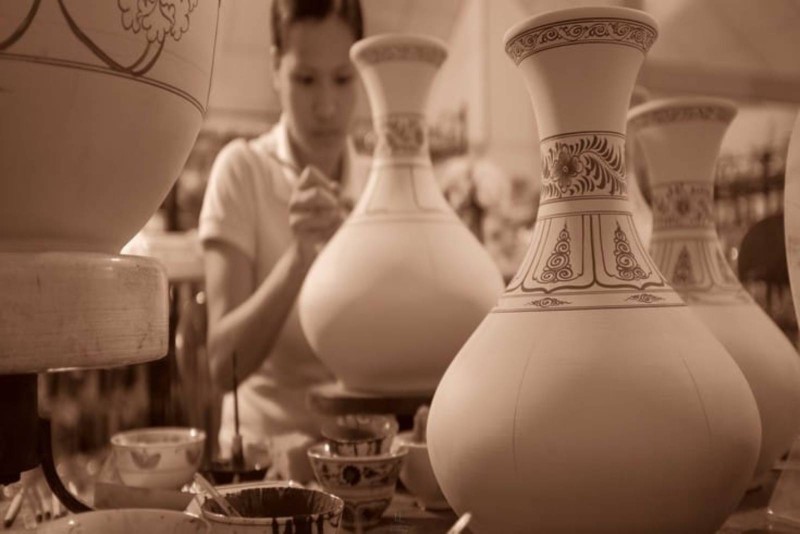
Historical and Cultural Background
The story of Bat Trang Ceramics is deeply woven into the fabric of Vietnamese history. This craft village has been a vital hub for pottery production since ancient times, evolving through significant dynasties that shaped its techniques and reputation. From the Tran Dynasty to the Nguyen Dynasty, Bat Trang’s artisans refined their skills and contributed to the rich tapestry of traditional ceramics Vietnam.
The village's enduring legacy reflects a commitment to craftsmanship preservation and cultural heritage. Today, Bat Trang Ceramics continues to thrive, sustained by a vibrant artisan community dedicated to maintaining centuries-old traditions.
Explore how history and culture combine to define the identity of Bat Trang Ceramics and its significance in Vietnam.
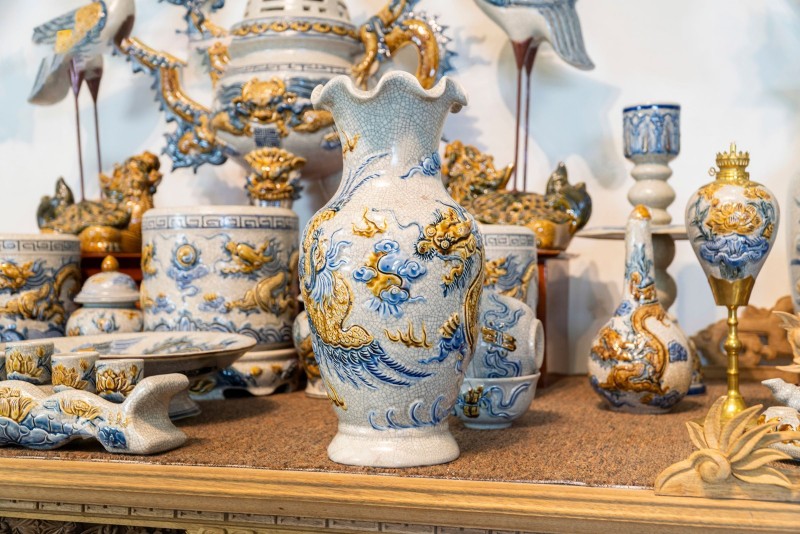
Evolution of Bat Trang Ceramics Through the Dynasties
The evolution of Bat Trang Ceramics mirrors Vietnam’s historical shifts, particularly during the Tran Dynasty and Nguyen Dynasty.
- During the Tran Dynasty, Bat Trang pottery gained prominence for its quality and design innovations.
- The Nguyen Dynasty elevated the craft further, integrating royal patronage that enhanced both artistic standards and commercial reach.
- Bat Trang became known for its contribution to Vietnamese royal ceramics and broader trade networks.
These phases highlight the village’s role in shaping Vietnam’s ceramic tradition and the cultural importance that persists today.
Development during the Tran and Nguyen Dynasties
For centuries, the Tran Dynasty and later the Nguyen Dynasty shaped the evolution of Bat Trang Ceramics, elevating its artistry and craftsmanship to new heights. This period marked key advancements that defined the village’s legacy and reputation.
- Enhanced firing techniques introduced during the Tran era improved the strength and finish of pottery.
- Under the Nguyen Dynasty, royal patronage expanded support for artisan workshops, encouraging creative innovations.
- These dynastic influences established Bat Trang as a prestigious center of ceramic excellence in Vietnam.
Together, these developments laid a strong foundation for the timeless appeal of Bat Trang Ceramics, connecting the past to the present in every handcrafted piece.
Role in Vietnamese Royal Courts and Trade
The significance of Bat Trang Ceramics extends beyond artistry, playing a vital role in Vietnam’s royal culture and trade networks. Supplying exquisite ceramics to the royal courts, the village earned a reputation as a symbol of refinement and cultural identity.
- Bat Trang’s ceramics were highly prized in Vietnamese royal courts for their quality and beauty.
- The village became an important supplier in regional trade, spreading Vietnamese cultural influence.
- Ceramics from Bat Trang embodied prestige and tradition, contributing to both cultural preservation and economic prosperity.
This rich history underscores why Bat Trang Ceramics remains cherished today, inviting you to experience its legacy firsthand.
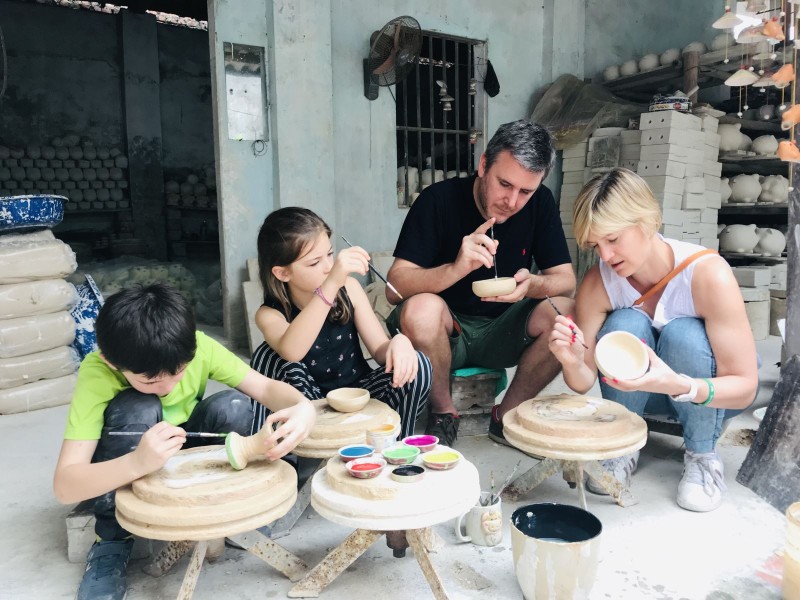
Traditional Craftsmanship and Artisan Community
The heart of Bat Trang Ceramics lies in its dedicated artisan community, where traditional craftsmanship is more than a skill—it is a way of life. Here, craft techniques have been carefully passed down through generations, nurturing a vibrant culture that honors heritage and meticulous artistry. Connecting with this community offers a deeper understanding of the village’s unique identity and the human stories behind every handcrafted piece.
The legacy of traditional craftsmanship Bat Trang is embodied by families who have devoted their lives to pottery. Their commitment preserves centuries-old methods while adapting subtly to modern demands. Immersing yourself in this artisan community reveals a rich cultural tradition that continues to thrive today.
Techniques Passed Down Through Generations
Pottery in Bat Trang Ceramic Village is created using authentic methods handed down across generations, ensuring each piece carries the village’s artistic soul.
- Kiln Firing: Artisans employ traditional wood-fired kilns, carefully controlling temperature for optimal strength and finish.
- Hand Molding: Skilled hands shape clay into intricate forms, blending precision with creativity.
- Glazing: Natural glazes are applied with attention to texture and color, reflecting both function and beauty.
These enduring techniques preserve the essence of Bat Trang ceramics and maintain the high standards set by centuries of master potters.
Community Structure and Artisan Families
The social fabric of Bat Trang Ceramic Village is tightly woven around artisan families who sustain the craft and culture.
- Family Workshops: Many pottery studios are family-run, passing skills and values from elders to youth.
- Cultural Preservation: These families play a vital role in safeguarding traditions within the rapidly modernizing world.
- Community Events: Local gatherings celebrate craft milestones, fostering unity and shared identity.
Living heritage thrives here, making every visit an encounter with a vibrant, deeply rooted artisan community.
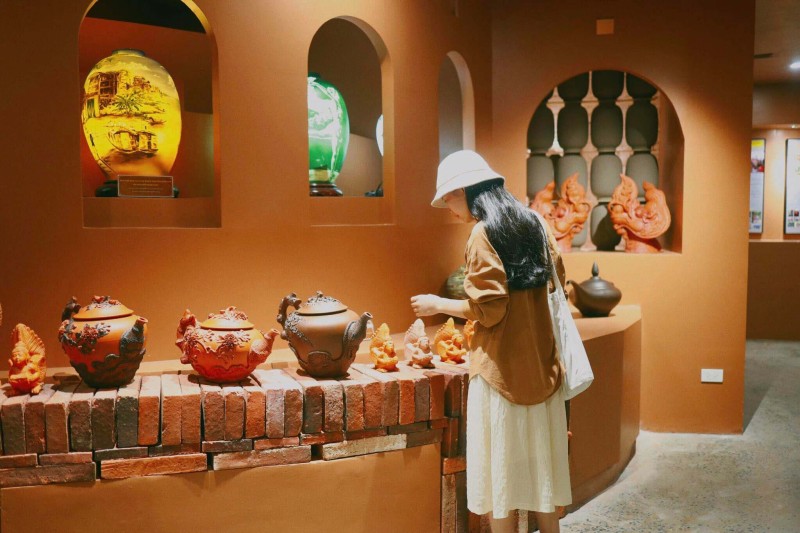
Preservation of Cultural Heritage
Efforts to preserve the rich traditions of Bat Trang Ceramics are vital for sustaining both the craft and the community’s cultural identity. Various local associations and government initiatives work tirelessly to protect and promote this heritage. Understanding these programs reveals the broader significance of cultural heritage preservation Vietnam and highlights how visitors can support sustainable craft tourism.
By recognizing and participating in these preservation efforts, you contribute to keeping centuries-old artistry alive for future generations.
Current Efforts to Maintain Traditional Methods
Several programs focus on conserving the authentic pottery techniques unique to Bat Trang Ceramic Village:
- Artisan Training Programs: Workshops and apprenticeships help transfer traditional skills to younger generations.
- Conservation Practices: Initiatives encourage sustainable use of materials and eco-friendly kiln technologies.
- Community Awareness: Educational campaigns promote the value of preserving craftsmanship.
These ongoing efforts ensure that traditional craft conservation remains a priority within the village.
Role of Local Associations and Government Initiatives
Support from local organizations and government bodies strengthens the preservation framework:
- Craft Associations Vietnam coordinate artisan activities and organize cultural events to showcase the craft.
- Government Cultural Programs provide funding and policy support aimed at sustaining craft villages like Bat Trang.
- Collaboration with tourism sectors promotes sustainable craft tourism that benefits both artisans and visitors.
Such structured efforts build trust and help maintain Bat Trang’s living heritage.
Opportunities for Including Original Artisan Interviews or First-Hand Craft Descriptions
Bringing artisan voices into the narrative adds authenticity and deepens visitor connection:
- Direct Quotes: Personal stories from potters reveal their passion and craftsmanship challenges.
- Anecdotal Storytelling: Descriptions of daily life and generational knowledge enrich the cultural context.
- Craft Village Experiences: First-hand insights help visitors appreciate the human side of the craft.
Including these elements enhances the uniqueness of the content and supports immersive engagement.
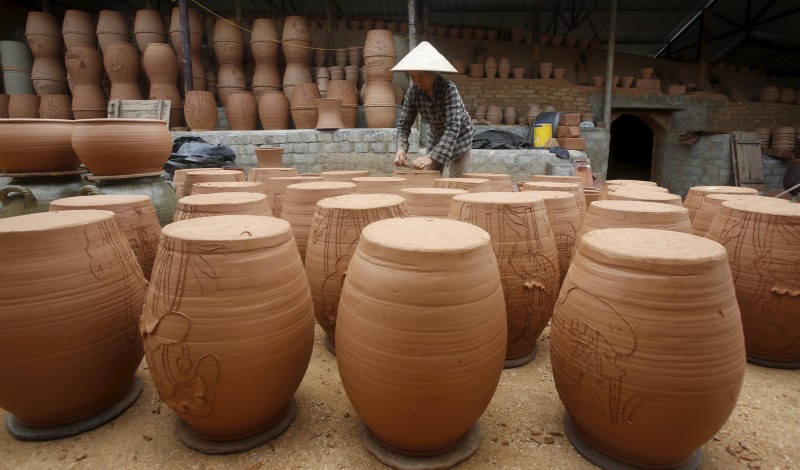
Planning Your Visit to Bat Trang Ceramic Village
Planning your trip to Bat Trang Ceramic Village is essential for a smooth and enjoyable experience. Knowing how to get there, when to visit, and what costs to expect helps you make the most of your journey. With various transport options, seasonal considerations, and visitor facilities, preparation is key to immersing yourself fully in the village’s cultural charm.
Whether you’re traveling solo or with family, understanding accessibility and entry fees allows you to tailor your visit comfortably. Make your trip to Bat Trang Ceramic Village memorable by planning ahead.

How to Get There
Getting to Bat Trang Ceramic Village from Hanoi is straightforward, with multiple transport modes suited to different preferences and budgets. Knowing your options will help you choose the most convenient and enjoyable way to arrive.
- Bus: Affordable and frequent, buses connect central Hanoi to the village.
- Taxi or Grab: Offers flexible and direct routes with reasonable travel times.
- Motorbike: For the adventurous, motorbike routes provide a scenic and active journey.
- Cycling or Walking: Ideal for fitness enthusiasts looking to explore the surroundings at a leisurely pace.
Selecting the best transport method ensures your visit to Bat Trang Ceramic Village begins stress-free.
Public Transport Options Including Bus Routes
Using public buses to reach Bat Trang Ceramic Village is a cost-effective and reliable choice. Key routes include:
- Bus No. 14: Direct line from central Hanoi to Bat Trang, running every 20 minutes.
- Bus No. 47: Connects nearby districts with stops close to the village entrance.
- Bus No. 105: Offers a scenic route passing through suburban neighborhoods before reaching Bat Trang.
These options provide easy access for travelers preferring public transport to explore the village affordably.
Private Transfers, Taxis, and Motorbike Routes
For those seeking convenience and flexibility, private transport options abound:
- Taxi or Grab: Available throughout Hanoi, taxis can take you directly to Bat Trang, averaging a 45-minute ride depending on traffic.
- Motorbike Rentals: Popular among locals and tourists alike, motorbikes offer a faster, more adventurous route with multiple paths to explore.
- Private Transfers: Pre-booked vehicles provide comfortable door-to-door service, ideal for groups or families.
These alternatives suit travelers prioritizing comfort or time efficiency.
Cycling and Walking Paths for Adventurous Visitors
For a more immersive experience, consider cycling or walking to Bat Trang Ceramic Village:
- Cycling Routes: Well-maintained paths along the Red River offer scenic views and fresh air, perfect for fitness and exploration.
- Walking Paths: For those nearby, walking allows discovery of local life and natural surroundings at a relaxed pace.
These active options add a unique dimension to your visit and connect you more closely with the village’s rural setting.
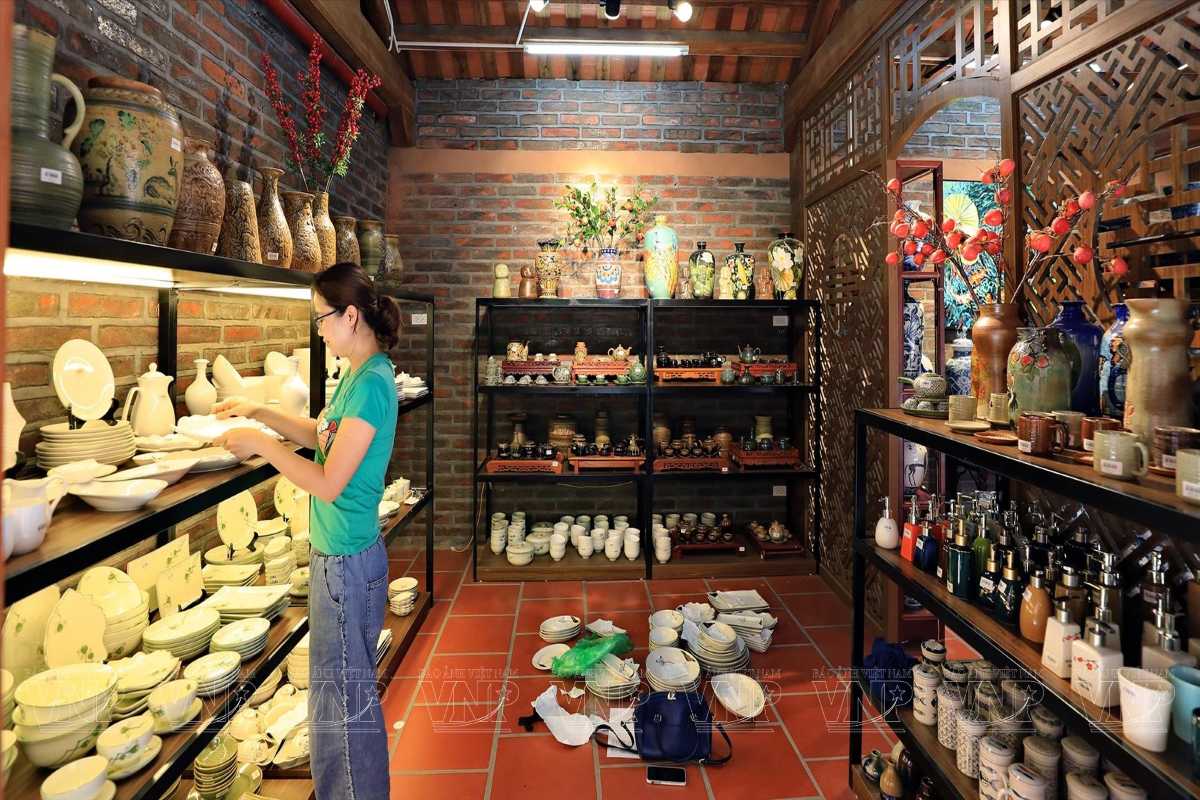
Best Time to Visit
Choosing the best time to visit Bat Trang can enhance your experience by aligning your trip with favorable weather and vibrant cultural events. Understanding the local climate and festival calendar allows you to plan visits when the village is most lively and accessible, making your journey more memorable.
Whether you prefer mild weather or want to partake in traditional celebrations, knowing when to visit Bat Trang Ceramic Village helps you make the most of your travel.
Seasonal Weather Considerations
The climate around Bat Trang Ceramic Village follows typical northern Vietnam patterns, influencing your travel experience:
- Spring (March to May): Mild temperatures and blooming landscapes create pleasant conditions.
- Summer (June to August): Hot and humid with occasional heavy rains; suitable for early morning visits.
- Autumn (September to November): Cool, dry, and ideal for outdoor exploration.
- Winter (December to February): Cooler weather, sometimes chilly, but less crowded.
Being aware of these seasonal weather patterns helps you pack appropriately and choose the best days to explore the village.
Festivals and Cultural Events Calendar
Experiencing Bat Trang festivals adds cultural depth to your visit. Key events include:
- Bat Trang Pottery Festival (usually held in October): Showcases artisan crafts, traditional performances, and workshops.
- Mid-Autumn Festival: Local celebrations with lanterns and cultural activities.
- Tet Holiday (Lunar New Year): Special market events and festive village atmosphere.
Planning your trip around these cultural events Bat Trang lets you witness the vibrant traditions that keep the village’s heritage alive.

Entry and Fees
Understanding Bat Trang workshop entry fees and other costs is essential for planning your visit without surprises. From pottery workshops to museums and cultural activities, knowing typical expenses helps you budget effectively and enjoy all that the village offers.
Whether you’re eager to try your hand at pottery or simply explore the village’s heritage, clear information on fees ensures a smooth and enjoyable visit to Bat Trang Ceramic Village.
Admission to Workshops, Museums, and Activities
Entry fees vary depending on the experience you choose at Bat Trang Ceramic Village:
- Pottery Workshops: Typically range from 100,000 to 300,000 VND per session, depending on duration and complexity.
- Museums and Exhibits: Admission usually costs around 50,000 to 100,000 VND.
- Cultural Demonstrations and Events: Some performances may require a nominal fee or be free during festivals.
These fees support the artisan community and contribute to cultural preservation efforts.
Typical Costs and Budget Tips
Make the most of your budget with these practical tips for visiting Bat Trang:
- Book workshops directly with studios to avoid middleman fees.
- Visit during weekdays or off-peak seasons for lower prices and fewer crowds.
- Consider group bookings which may offer discounts.
- Allocate extra for authentic souvenirs to support local artisans.
With mindful planning, an affordable visit to Bat Trang Ceramic Village can be both rewarding and budget-friendly.
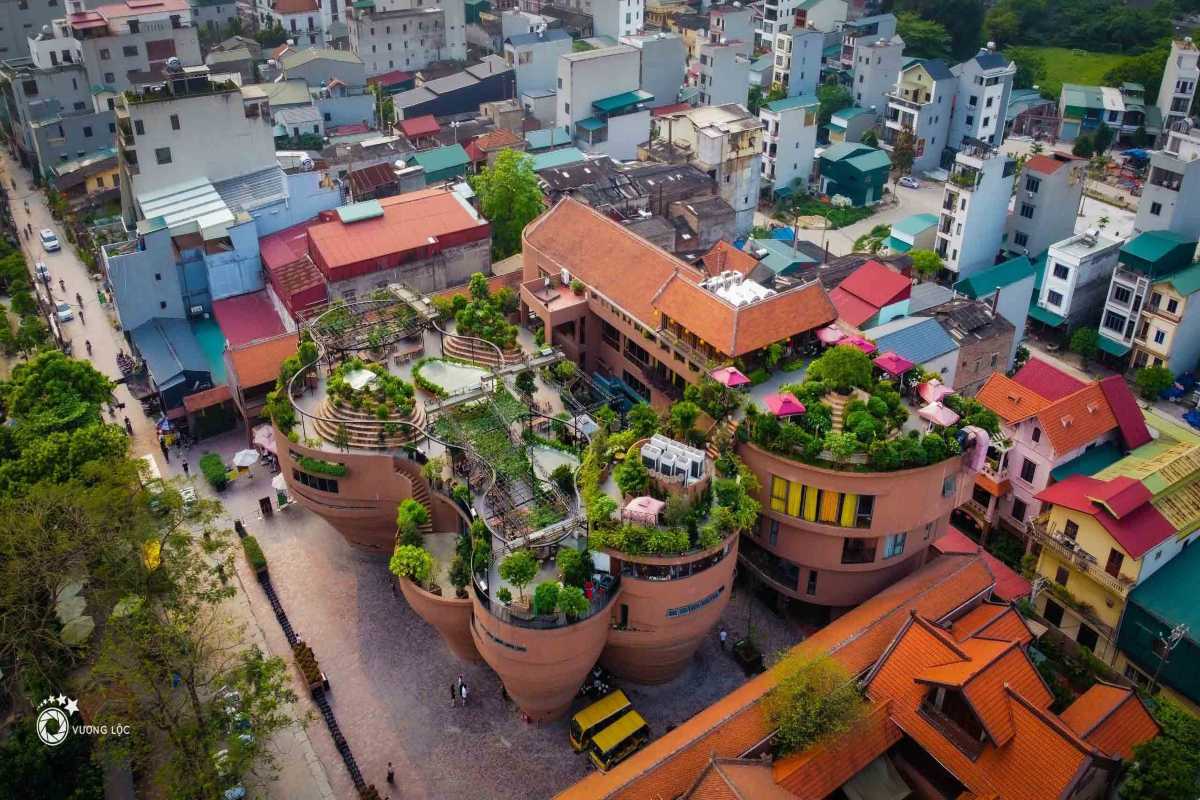
Accessibility and Visitor Facilities
Visitors to Bat Trang Ceramic Village can expect a range of facilities designed to make their experience comfortable and inclusive. Clear information about onsite amenities and accessibility helps you prepare for a convenient visit, ensuring everyone can enjoy the village’s cultural offerings with ease.
Knowing about Bat Trang visitor facilities allows you to plan your trip confidently, whether traveling solo, with family, or in groups.
Availability of Amenities Like Restrooms and Eateries
Basic comforts are readily available at Bat Trang Ceramic Village, making your visit more enjoyable:
- Restrooms: Clean and accessible facilities are located near main visitor areas.
- Eateries: Several small cafes and food stalls offer local snacks and refreshments.
- Seating Areas: Benches and shaded spots provide rest for visitors during exploration.
These amenities ensure you stay comfortable while immersing in the village’s cultural environment.
Accessibility Considerations for People with Mobility Challenges
The village strives to accommodate visitors with mobility needs, though some limitations exist due to its traditional layout:
- Pathways: Most main routes are flat and navigable, but some alleys may be uneven or narrow.
- Assistance: Local staff and guides are often available to support visitors requiring help.
- Facilities: Accessible restrooms are limited; prior arrangements can enhance the experience.
If you have mobility challenges, planning ahead will help you enjoy Bat Trang Ceramic Village fully.
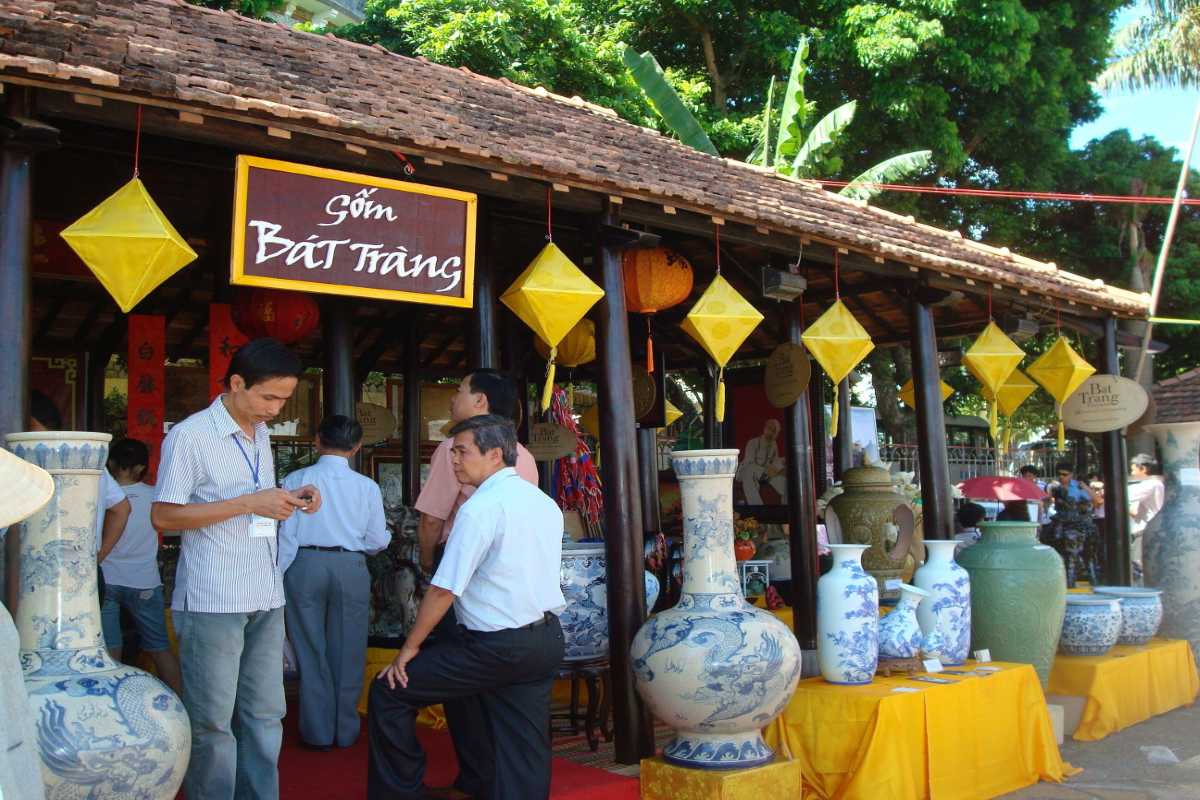
Activities and Experiences at Bat Trang
Bat Trang Pottery Workshops offer visitors a hands-on chance to engage deeply with the village’s rich ceramic tradition. Whether you are a beginner or looking to refine your skills, these cultural workshops provide immersive experiences that connect you to the heart of Bat Trang craftsmanship. Exploring available activities helps you select options that match your interests and travel style.
Participate in authentic artisan visits and craft demonstrations to enrich your visit and take home more than just souvenirs — take home memories of a truly cultural journey.

Pottery Workshops and Hands-On Experiences
Joining Bat Trang Pottery Workshops lets you experience firsthand the art of ceramic making. Various workshop types cater to different skill levels and interests, making it easy to find the right fit.
- Beginner Classes: Short, guided sessions perfect for first-timers eager to try pottery.
- Advanced Workshops: Extended courses for deeper skills and creative exploration.
- Family-Friendly Classes: Designed for all ages, offering fun and educational experiences.
- Booking Steps: Contact studios directly, check availability online, or visit in person to reserve your spot.
Booking your place early ensures you don’t miss the chance to craft your own piece of Bat Trang ceramics.
Types of Workshops Available and Duration
Choose from a variety of pottery workshops tailored to fit your schedule and preferences:
- Short Workshops: Typically 1–2 hours, ideal for casual visitors wanting a quick experience.
- Half-Day Experiences: More in-depth sessions allowing you to create complex pieces.
- Family Classes: Interactive and enjoyable, designed for children and adults alike.
Each workshop offers a hands-on approach that immerses you in the craft and culture of Bat Trang.
Booking Procedures and Recommended Studios
Reserving your spot at a pottery workshop is simple and straightforward:
- Contact Studios: Reach out via phone or website to inquire about schedules and availability.
- Online Booking: Some studios offer online reservations for convenience.
- On-Site Booking: Walk-in visitors may secure spots depending on availability, but early booking is advised.
- Recommended Studios: Choose from trusted local studios known for quality instruction and authentic experiences.
Following these steps ensures a smooth booking process and a memorable workshop visit.

Guided Tours of the Village
Exploring Bat Trang Ceramic Village through guided tours offers a rich blend of cultural education and scenic sightseeing. These tours provide an in-depth look at the village’s history, craftsmanship, and community life. Choosing the right guided tour allows you to fully immerse yourself in Bat Trang craft demonstrations and understand the artisan traditions firsthand.
With knowledgeable guides leading the way, you gain valuable insights into the village’s legacy while enjoying a seamless and engaging experience.
Historical Walking Tours and Craft Demonstrations
Historical walking tours in Bat Trang combine fascinating stories with live artisan demonstrations:
- Tour Highlights: Visits to centuries-old pottery workshops and historic landmarks.
- Artisan Skills: Watch master potters create ceramics using traditional methods.
- Cultural Insights: Learn about the village’s evolution and its role in Vietnamese heritage.
These tours offer a vivid, hands-on glimpse into both history and craftsmanship.
Opportunities to Meet Local Artisans
Personal encounters with artisans deepen your connection to Bat Trang’s craft culture:
- Studio Visits: Meet families who have passed down pottery skills through generations.
- Interactive Sessions: Engage in conversations and learn about individual creative processes.
- Cultural Exchange: Experience the warm hospitality and stories behind each handcrafted piece.
These meaningful interactions provide a unique and authentic craft village experience.
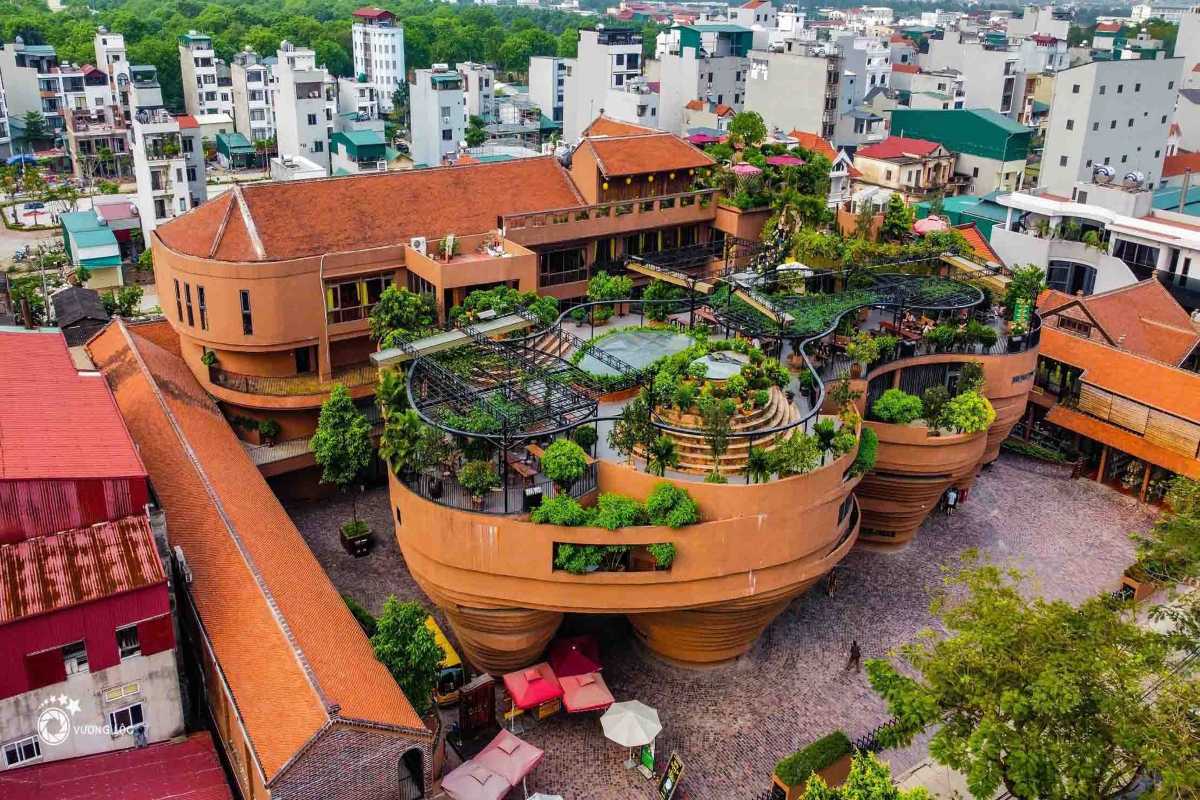
Shopping for Ceramics and Souvenirs
When visiting Bat Trang Ceramic Village, knowing what to buy and how to find genuine pieces enhances your experience and supports local artisans. From decorative items to practical pottery, selecting authentic products ensures you take home a meaningful souvenir that reflects the village’s rich craft heritage.
Learning about Bat Trang ceramic souvenirs helps you make informed decisions and appreciate the artistry behind each creation.
Popular Ceramic Products and Their Uses
Bat Trang offers a wide variety of ceramic products with both cultural significance and everyday utility:
- Ceramic Vases: Often decorated with traditional motifs, perfect for home display.
- Bowls and Plates: Functional items crafted with care for daily use or special occasions.
- Decorative Items: Figurines, tea sets, and artistic pieces showcasing local craftsmanship.
Understanding these options allows you to choose items that suit your taste and purpose.
Tips for Authentic Purchases and Price Negotiation
Shopping wisely helps you avoid counterfeits and get the best value:
- Look for Handcrafted Details: Genuine Bat Trang ceramics have unique imperfections reflecting handwork.
- Ask About the Artisan: Purchasing directly from studios or artisan families supports authenticity.
- Price Negotiation: Politely negotiate prices, especially in markets, while respecting artisan effort.
- Beware of Mass-Produced Items: Avoid overly uniform or cheaply made products that lack cultural value.
These tips empower you to shop confidently while honoring the village’s craft traditions.

Cultural Performances and Festivals
Visiting Bat Trang Ceramic Village during its vibrant cultural events adds a rich layer to your experience. The village hosts a variety of celebrations that showcase its pottery heritage through lively performances and exhibitions. Planning your trip around the Bat Trang Pottery Festival or other Bat Trang cultural events allows you to engage deeply with local traditions and festivities.
These seasonal highlights bring the village’s artisan spirit to life, offering memorable and immersive encounters.
Annual Bat Trang Pottery Festival Highlights
The annual Bat Trang Pottery Festival is a centerpiece event celebrating the village’s craft and culture:
- Pottery Exhibitions: Displays of traditional and contemporary ceramic works by local artisans.
- Craft Demonstrations: Live showcases of pottery making, glazing, and firing techniques.
- Cultural Performances: Traditional music, dance, and theatrical shows enrich the festive atmosphere.
- Workshops and Competitions: Opportunities for visitors to participate and learn hands-on.
This festival highlights the creativity and heritage of Bat Trang, making it a must-see event for visitors.
Other Seasonal Cultural Events and Exhibitions
Beyond the main festival, Bat Trang offers year-round cultural experiences:
- Mid-Autumn Celebrations: Featuring lantern displays and folk performances.
- Artisan Exhibitions: Rotating showcases of pottery and craft innovations.
- Local Markets: Seasonal fairs offering authentic ceramics and local cuisine.
These events provide ongoing opportunities to experience the dynamic cultural life of Bat Trang Ceramic Village throughout the year.
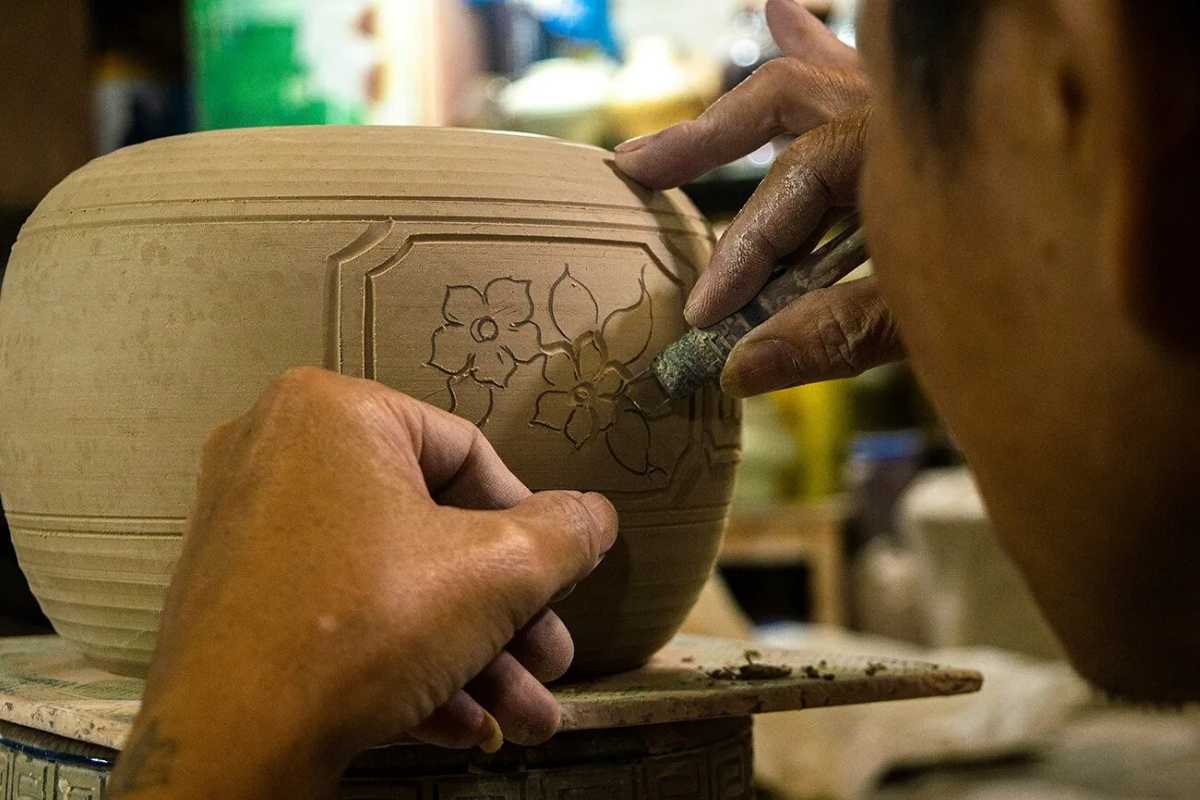
Nearby Attractions and Excursions
Exploring nearby attractions and excursions around Bat Trang Ceramic Village enriches your travel experience by offering diverse cultural and natural sites. These destinations provide excellent opportunities for day trips and multi-stop itineraries, allowing you to delve deeper into the heritage and landscapes surrounding Bat Trang.
From historic villages to scenic river routes, the area invites visitors to expand their journey beyond the ceramic village itself.

Duong Lam Ancient Village
Located near Bat Trang, Duong Lam Ancient Village is a captivating destination known for its well-preserved heritage and traditional architecture. Visiting this village alongside Bat Trang offers a fuller picture of northern Vietnam’s rural and cultural history.
- Established over 1,200 years ago, Duong Lam showcases ancient houses and temples.
- The village holds a strong connection to Vietnamese heritage with its old communal houses.
- Visitors can experience a peaceful, authentic rural atmosphere reflecting centuries-old traditions.
Discovering Duong Lam Village history complements your cultural exploration when visiting Bat Trang Ceramic Village.
Historical Significance and Visitor Appeal
Duong Lam Ancient Village stands out as one of the few remaining ancient villages near Hanoi that maintains its original architecture and way of life:
- Features traditional laterite houses dating back centuries.
- Home to temples honoring local and national heroes.
- Offers a glimpse into Vietnamese rural life and craftsmanship.
These elements make Duong Lam a respected cultural heritage site with strong visitor appeal.
Distance and Transport Options from Bat Trang
Traveling from Bat Trang Ceramic Village to Duong Lam is easy and convenient:
- Taxi or Private Car: Approximately 40 minutes for a direct route.
- Motorbike: A scenic ride of about 45 minutes along rural roads.
- Public Transport: Limited direct routes; best combined with a private transfer or tour.
These options enable you to plan a seamless day trip from Bat Trang to Duong Lam Ancient Village.
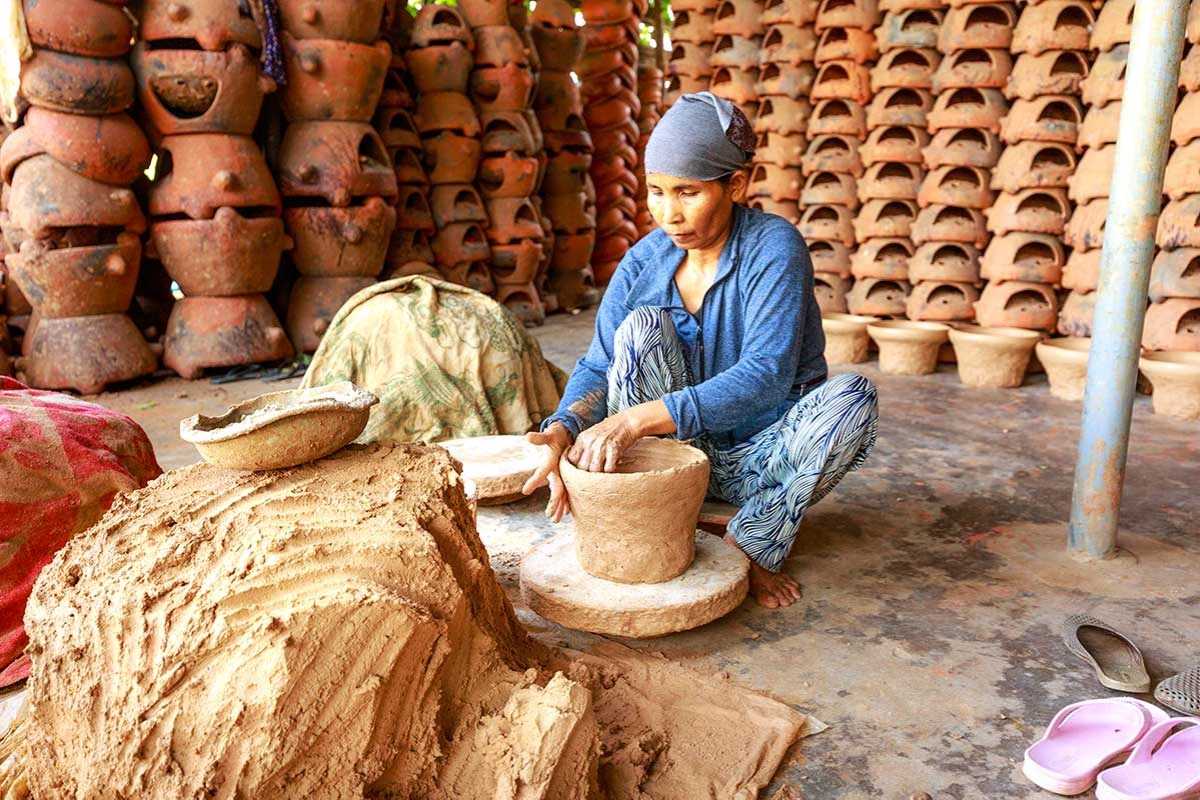
Long Bien Bridge and Hanoi Riverside
The iconic Long Bien Bridge and scenic Hanoi Riverside offer captivating sightseeing experiences near Bat Trang Ceramic Village. These spots blend history and natural beauty, providing visitors with additional cultural landmarks and photographic opportunities. Including these destinations in your itinerary enhances your understanding of the region’s heritage.
Explore Hanoi Riverside sightseeing and enjoy memorable day trips from Bat Trang that showcase Vietnam’s vibrant river culture.
Sightseeing Opportunities Nearby
Enjoy a range of engaging sights and activities around Long Bien Bridge and the Hanoi Riverside:
- Historic Bridge Views: Walk or cycle across Long Bien Bridge, a relic of colonial architecture with panoramic river vistas.
- Riverside Walks: Stroll along the banks of the Red River, observing daily life and picturesque landscapes.
- Photography Spots: Capture sunrise or sunset scenes that highlight the bridge and river’s charm.
- Local Markets: Discover riverside markets offering fresh produce and local crafts.
These experiences enrich your visit with cultural and natural delights.
Suggested Combined Day Trips
Maximize your travel experience by combining Bat Trang Ceramic Village with nearby attractions in a single itinerary:
- Morning: Explore pottery workshops and markets in Bat Trang.
- Afternoon: Visit Long Bien Bridge for a leisurely walk and riverside sightseeing.
- Evening: Enjoy dining near the Hanoi Riverside or explore local markets.
This combined day trip offers a well-rounded blend of craft, history, and nature for a memorable outing.
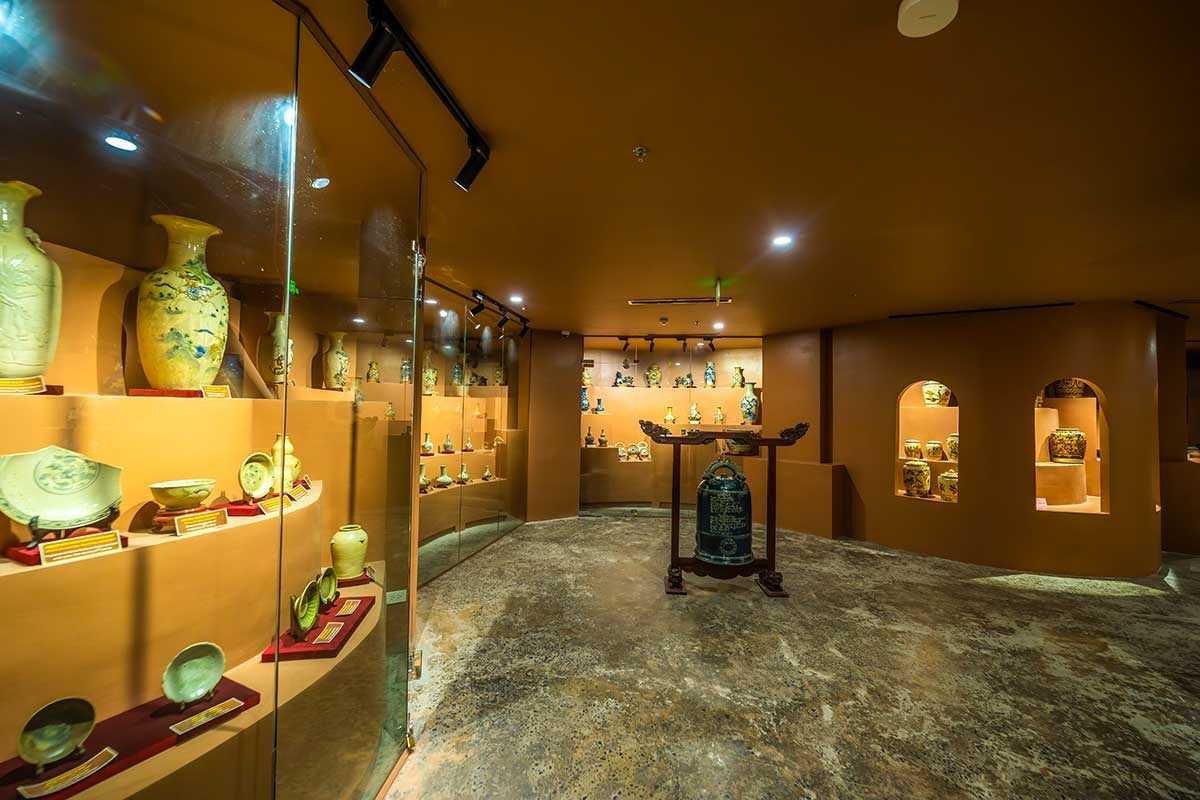
Outdoor Activities Around the Red River
The area surrounding Bat Trang Ceramic Village offers a variety of outdoor activities that perfectly complement your cultural visit. From scenic Red River cycling routes to tranquil nature walks, these recreational options invite you to explore the natural beauty and vibrant local life nearby.
Engage in active tourism and discover nature walks near Bat Trang along with bustling local markets that bring the riverside community to life.
Cycling Routes and Nature Walks
Cyclists and walkers can enjoy well-maintained trails and paths offering both exercise and scenic views:
- Riverside Cycling Paths: Gentle routes along the Red River provide refreshing rides through rural landscapes.
- Nature Trails: Quiet walking paths wind through fields and villages, perfect for birdwatching and peaceful exploration.
- Route Tips: Early mornings and late afternoons are ideal times for outdoor activities to avoid midday heat.
These options offer an active way to experience the environment surrounding Bat Trang.
Local Markets and Food Stalls
The vibrant local markets and food stalls near the river offer a feast for the senses:
- Fresh Produce Markets: Discover seasonal fruits, vegetables, and herbs sourced from nearby farms.
- Street Food Stalls: Sample traditional Vietnamese snacks and dishes prepared with authentic flavors.
- Artisan Vendors: Markets often include pottery sellers, providing an opportunity to shop for local crafts.
Exploring these markets enriches your visit with tastes and sights unique to the Bat Trang riverside community.

Conservation and Sustainability Efforts
Efforts toward conservation and sustainability Bat Trang aim to protect both the environment and cultural heritage tied to this historic ceramic village. Understanding these initiatives sheds light on the challenges posed by traditional ceramic production and the innovative solutions promoting eco-friendly practices. Learning about responsible tourism and craft preservation helps visitors support a sustainable future for Bat Trang.
By embracing these efforts, you contribute to safeguarding a cherished cultural legacy while minimizing environmental impact.

Environmental Impact of Ceramic Production
Ceramic production in Bat Trang faces ecological challenges primarily related to kiln emissions and waste management. Recognizing these issues highlights the need for sustainable approaches to preserve the village’s environment and craft tradition.
- Kiln Emissions: Traditional wood-fired kilns release pollutants affecting local air quality.
- Waste Management: Disposal of clay scraps and glaze residues poses environmental concerns.
- Resource Use: Efficient material usage is crucial to reduce environmental strain.
These challenges call for balanced solutions that respect heritage while protecting the ecosystem.
Challenges with Kiln Emissions and Waste
The environmental footprint of traditional kiln operation includes:
- Smoke and particulate emissions from wood-burning kilns impacting air quality.
- Accumulation of ceramic waste such as broken pieces and unused clay.
- Energy consumption contributing to local resource depletion.
Awareness of these issues is essential for fostering sustainable practices within the community.
Adoption of Eco-Friendly Production Methods
In response to environmental concerns, many artisans and organizations are adopting greener practices:
- Use of cleaner-burning kilns that reduce smoke and pollutants.
- Recycling of clay waste and minimizing material discard.
- Implementation of sustainable craft methods that conserve energy and resources.
These eco-friendly innovations demonstrate a commitment to sustaining both craft and environment in Bat Trang.
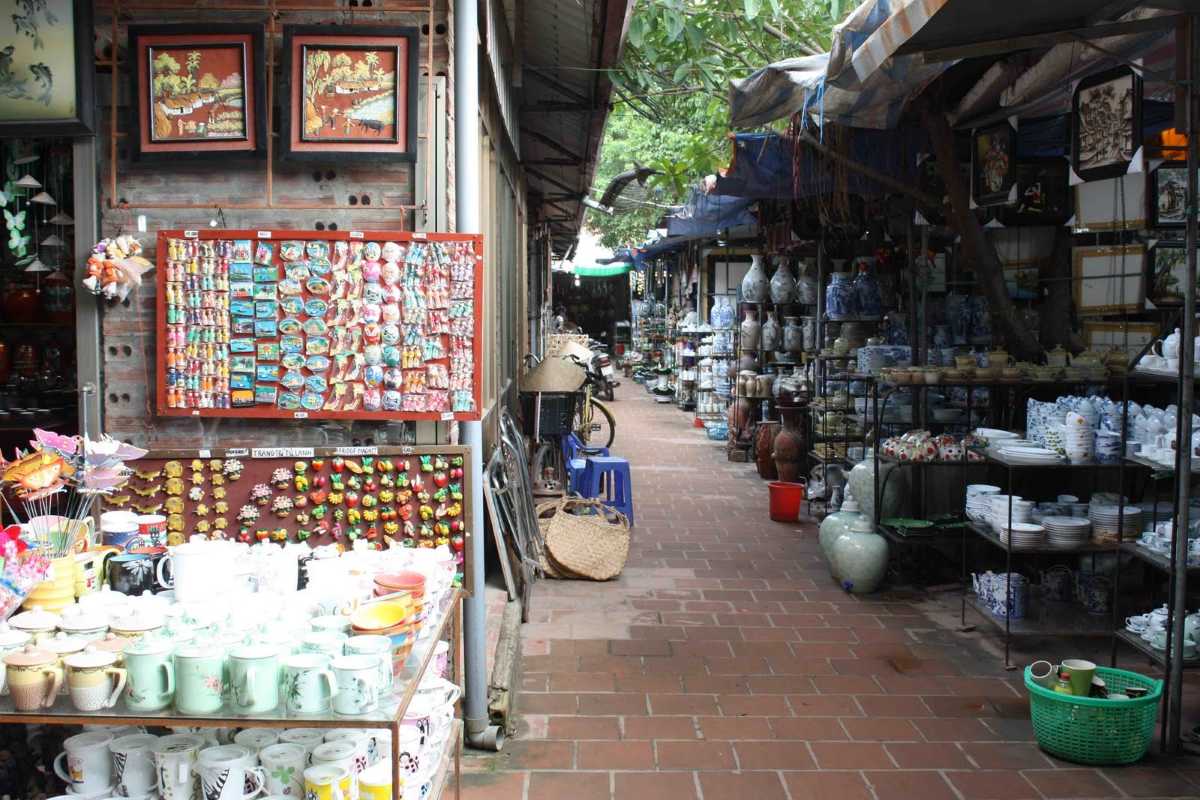
Cultural Preservation Initiatives
The preservation of Bat Trang’s traditional crafts depends heavily on dedicated initiatives that document its rich heritage and actively involve the local community. These efforts not only safeguard the village’s unique artisan skills but also inspire continued cultural pride and education. Understanding these programs highlights the deep commitment to cultural preservation within the craft village.
Engaging with these initiatives shows how heritage and community come together to keep Bat Trang’s legacy vibrant.
Documentation and Promotion of Traditional Crafts
Key activities support the archival and promotion of Bat Trang’s craft heritage:
- Archival Projects: Recording histories, techniques, and artisan stories to preserve knowledge.
- Exhibitions and Festivals: Showcasing traditional ceramics to local and international audiences.
- Digital Platforms: Using websites and social media to promote awareness and appreciation.
These documentation and promotion efforts play a vital role in protecting cultural heritage.
Community Engagement and Education Programs
Community involvement is essential for sustaining craft traditions across generations:
- Artisan Workshops: Experienced potters mentor youth to pass on skills and values.
- School Programs: Cultural education integrated into local curricula to nurture appreciation.
- Public Events: Community fairs and craft days encourage participation and cultural pride.
These programs foster a living heritage, ensuring that Bat Trang’s crafts remain a vibrant part of local life.
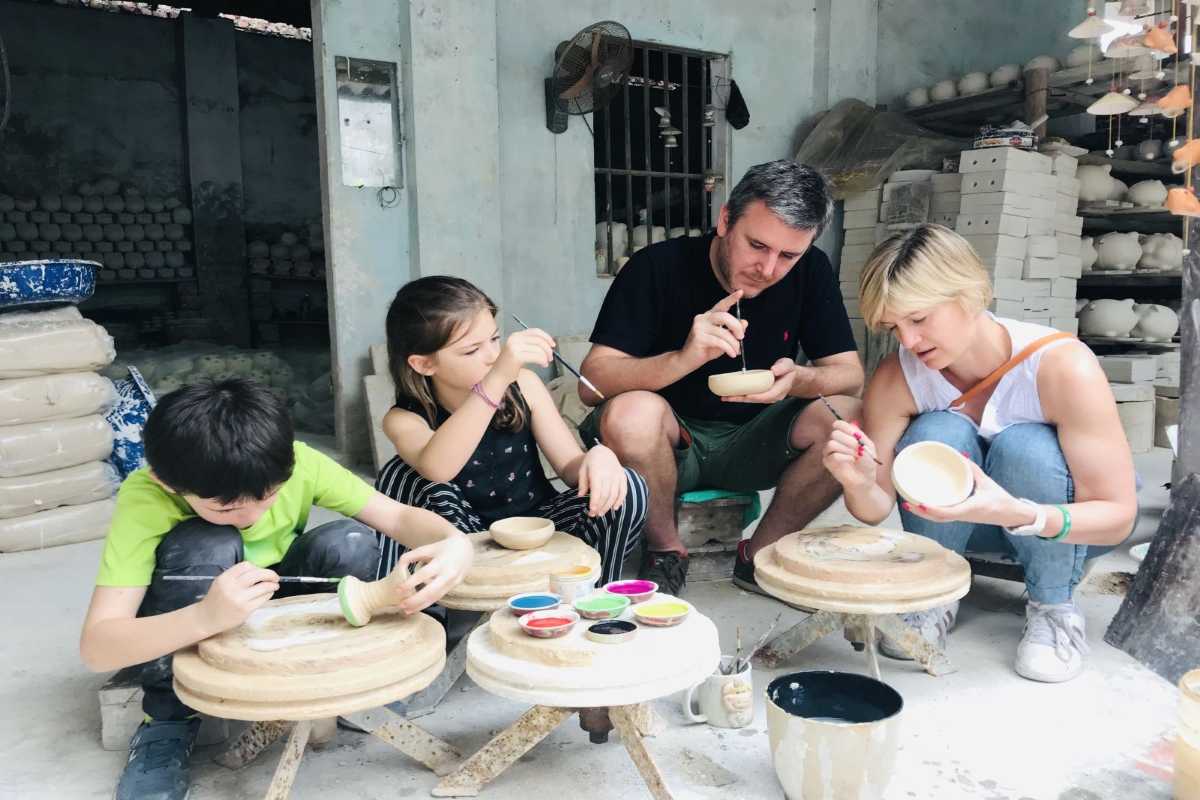
Role of Tourism in Supporting Sustainability
Tourism plays a vital role in sustaining both the craft traditions and environment of Bat Trang Ceramic Village. Responsible visitor behavior helps protect cultural heritage while supporting the livelihoods of local artisans. Recognizing the impact of your travel choices encourages more sustainable and ethical tourism practices that benefit the entire community.
By embracing sustainable tourism, you contribute to preserving Bat Trang’s unique ceramic craft for future generations.
Responsible Tourism Practices Recommended for Visitors
Adopting eco-friendly habits during your visit supports the village’s sustainability efforts:
- Minimize Waste: Avoid single-use plastics and dispose of trash properly.
- Respect Local Customs: Follow guidelines when visiting workshops and artisan homes.
- Use Public Transport or Shared Rides: Reduce carbon footprint by choosing sustainable travel options.
- Support Community Events: Participate respectfully in cultural festivals and activities.
These simple actions help maintain the natural and cultural environment of Bat Trang.
Supporting Local Artisans through Ethical Purchasing
Conscious buying ensures your souvenirs make a positive impact:
- Purchase Directly from Artisans: Guarantees fair compensation and authentic products.
- Choose Handmade Items: Avoid mass-produced goods to support traditional craftsmanship.
- Learn the Stories Behind Products: Understanding artisans’ work deepens appreciation and respect.
- Spread Awareness: Encourage others to support sustainable craft villages.
Ethical purchasing empowers the Bat Trang community and sustains its vibrant artisan culture.

Practical Travel Tips and Recommendations
Visiting Bat Trang Ceramic Village is most rewarding when equipped with practical advice that helps you navigate the village smoothly and respectfully. Understanding insider tips, timing, and local customs enhances your experience, making your trip enjoyable and culturally rich.
These practical travel tips Bat Trang guide you through the essential preparations to get the most from your visit.

Insider Tips for First-Time Visitors
If it’s your first time at Bat Trang Ceramic Village, a few key tips can help you avoid common pitfalls and fully appreciate the village’s charm:
- Plan visits during weekdays or early mornings to avoid crowds.
- Wear comfortable shoes suitable for walking on uneven village paths.
- Take time to observe artisans at work without disrupting their process.
- Engage politely and ask permission before photographing or handling items.
Following these tips ensures a respectful and immersive visit.
Best Times to Visit Workshops to Avoid Crowds
To enjoy a relaxed and focused workshop experience, consider these timing suggestions:
- Early mornings: Workshops are less crowded, and artisans are more available for personal guidance.
- Weekdays: Visitor numbers are lower compared to weekends and holidays.
- Off-peak seasons: Weather is cooler and the village quieter, ideal for leisurely exploration.
Choosing the right time helps you connect more deeply with the craft.
Navigating the Village and Interacting Respectfully with Artisans
Respect for local customs fosters positive interactions during your visit:
- Approach artisans with genuine interest and patience.
- Avoid loud conversations or intrusive behavior in workshop spaces.
- Follow any guidelines or requests regarding touching or handling ceramics.
- Support the community by purchasing authentic items directly from artisans.
Respectful behavior enhances your experience and honors the village’s cultural heritage.
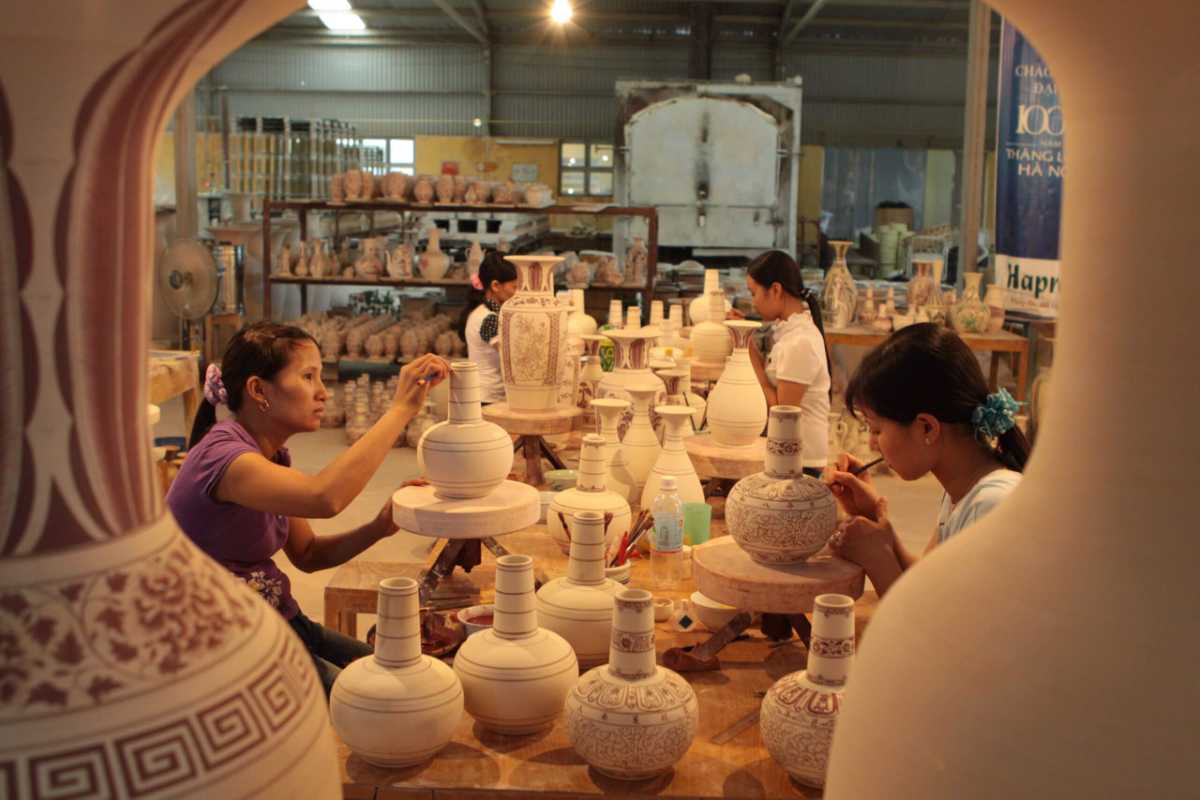
Tips for Families and Different Traveler Types
Whether you’re traveling with family or seeking adventure, Bat Trang Ceramic Village offers activities suited to a variety of interests and needs. Tailored advice helps you plan a visit that is both enjoyable and safe, ensuring every traveler finds something memorable.
Explore family-friendly Bat Trang activities and options for adventure travelers to make the most of your experience.
Family-Friendly Activities and Safety Tips
Families visiting Bat Trang can enjoy several safe and engaging options:
- Hands-on pottery workshops suitable for children and adults.
- Strolling through the village’s artisan markets in a calm, relaxed environment.
- Participating in seasonal festivals with family-friendly performances.
- Keeping hydrated and wearing comfortable footwear for easy navigation.
These tips help families have a smooth and rewarding visit.
Recommendations for Cultural Tourists and Adventure Seekers
For travelers seeking cultural immersion or adventure, Bat Trang offers:
- Cultural Tours: Guided visits highlighting artisan craftsmanship and village history.
- Adventure Activities: Cycling along scenic village roads and riverside nature walks.
- Craft Workshops: Opportunities to create your own ceramics and learn traditional techniques.
- Local Food Exploration: Sampling authentic Vietnamese snacks and street food nearby.
These tailored experiences cater to diverse traveler interests and enrich your visit.

Combining Bat Trang with Hanoi Itineraries
Planning trips that include both Bat Trang Ceramic Village and Hanoi helps you maximize your travel experience. Efficient multi-destination planning lets you explore the cultural richness of Bat Trang while enjoying the vibrant city life of Hanoi in a seamless and rewarding way.
Discover popular Bat Trang Hanoi day trips that fit easily into your travel schedule.
Suggested Day-Trip Plans
Here are sample itineraries combining the best of Bat Trang and Hanoi:
- Morning: Visit Bat Trang Ceramic Village for pottery workshops and shopping.
- Midday: Return to Hanoi for lunch and sightseeing in the Old Quarter.
- Afternoon: Explore historic sites such as the Temple of Literature or Hoan Kiem Lake.
- Evening: Enjoy local dining and cultural shows in Hanoi.
These plans offer a balanced mix of craft, culture, and city exploration.
Transport Logistics and Time Management
Efficient travel between Bat Trang and Hanoi is key for a smooth trip:
- Public Bus: Frequent routes connect Hanoi to Bat Trang, with journey times around 45 minutes.
- Taxi or Ride-Hailing: Convenient door-to-door service ideal for groups or tight schedules.
- Motorbike Rentals: Popular for adventurous travelers comfortable with local traffic.
- Time Management: Allow buffer time for traffic and visit duration to avoid rush.
Following these tips helps you enjoy your combined itinerary without stress.

Conclusion and Final Thoughts
Visiting Bat Trang Ceramic Village offers a unique window into Vietnam’s rich artisan heritage and vibrant cultural traditions. This village is not only a place to witness remarkable craftsmanship but also a community striving to preserve its cultural identity for future generations. Supporting traditional crafts and engaging respectfully during your visit contribute to the ongoing preservation of this treasured heritage.
Plan your visit thoughtfully to fully appreciate all that Bat Trang Ceramic Village has to offer and help sustain its artisan community.

Summary of the Unique Appeal of Bat Trang Ceramic Village
Bat Trang Ceramic Village stands out as a must-visit destination due to its centuries-old pottery tradition and enduring cultural significance. The village’s unique ceramics and traditional pottery heritage are reflected in both the quality of its craft and the living artisan community that nurtures these skills.
Its blend of historical depth and contemporary creativity makes Bat Trang a captivating stop on any cultural journey through Vietnam.

Explore and Support Traditional Crafts
By choosing to explore Bat Trang Ceramic Village, you become part of a broader effort to support traditional crafts and artisan preservation. Ethical tourism and conscious purchasing empower local families and help maintain this cultural legacy. Respecting the artisans’ work and investing in authentic pieces promotes sustainable cultural tourism.
Your visit can make a positive impact by supporting the community that keeps these crafts alive.

Planning Your Visit Through Asia Travel Links
For assistance in organizing your trip to Bat Trang Ceramic Village, consider reaching out to Asia Travel Links. We provide expert travel support and tailored itinerary planning to ensure your experience is seamless and enriching. Contact us via our website or email for personalized advice and booking help.
Let us help you make your visit to Bat Trang memorable and hassle-free.
Mike Nguyen
Travel Advisor
Mobile: +84917506881 (whatsapp available)
Email: contact@asiatravellinks.com
Faqs
Bat Trang Ceramic Village is renowned for its centuries-old pottery tradition and skilled artisans who create a wide variety of handcrafted ceramics. This village is a living craft hub where traditional techniques meet modern designs, producing unique ceramic products that reflect Vietnamese cultural heritage.
- Over 700 years of pottery history
- Diverse range of ceramics including tableware, decorative pieces, and souvenirs
- Preservation of traditional craftsmanship through generations
- Blend of ancient methods and contemporary artistry
Visiting Bat Trang Ceramic Village offers a deep dive into Vietnam’s rich artisan legacy and a chance to witness pottery making firsthand.
Getting to Bat Trang Ceramic Village from Hanoi is convenient and flexible, with several transport options catering to different budgets and preferences.
- Public buses running from central Hanoi to Bat Trang
- Private taxis or Grab rides for direct and comfortable travel
- Motorbike routes for adventurous travelers
- Cycling or walking paths for fitness enthusiasts and scenic journeys
Plan your trip according to your schedule and comfort level to enjoy a hassle-free visit to Bat Trang Ceramic Village.
Entry to Bat Trang Ceramic Village itself is free, but workshops and specific experiences may have admission fees to cover materials and instruction.
- Typical workshop fees vary by duration and type of class
- Museums or exhibitions in the village might charge small entry fees
- Some studios offer free demonstrations or tours
Check with individual studios or tour operators for exact pricing to budget your visit effectively.
The ideal time to visit Bat Trang Ceramic Village is during the dry season from October to April, when the weather is pleasant and outdoor activities are enjoyable.
- Avoid the hot, humid summer months for more comfortable exploration
- Visit during cultural festivals for added experiences
- Early mornings or weekdays offer fewer crowds and a more peaceful atmosphere
Plan your visit to coincide with favorable weather and local events for the best experience.



